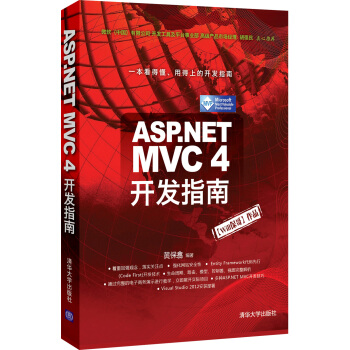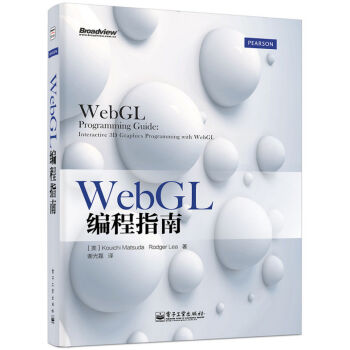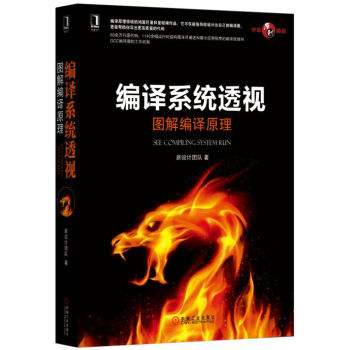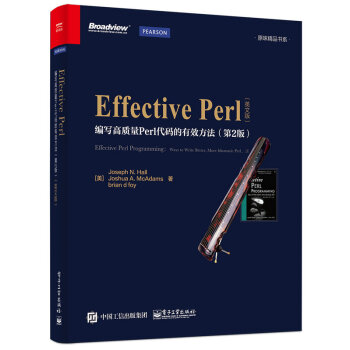
Effective Perl:編寫高質量Perl代碼的有效方法(第2版 英文版) pdf epub mobi txt 電子書 下載 2025
- Perl
- Programming
- Effective Perl
- Code Quality
- Best Practices
- Software Development
- 2nd Edition
- English
- Programming Language
- Computer Science

具體描述
産品特色
內容簡介
《EffectivePerl:編寫高質量Perl代碼的有效方法(第2版)(英文版)》是Perl編程領域的“聖經”級著作。它提供瞭100多個翔實的應用案例,足以涵蓋編程過程中經常遇到的方方麵麵,由此詳細闡釋齣各種高效且簡潔的寫法。《EffectivePerl:編寫高質量Perl代碼的有效方法(第2版)(英文版)》第1版曾暢銷十年之久,而在第2版中不僅修正瞭前版存在的一些問題,更與時俱進地引入瞭許多Perl領域的新主題,使內容更加完善豐富,也更具實用性。
《EffectivePerl:編寫高質量Perl代碼的有效方法(第2版)(英文版)》為初級Perl程序員鋪就瞭一條通往高階之路,而對高級Perl程序員而言,也是必備的技術參考書。
作者簡介
Joseph N. Hall,自稱“電腦神童”,一路玩著得州儀器的可編程計算器和配有 4KB 內存的 Radio Shack TRS-80 Model 1 長大。14 歲時初次教授計算機課程。Joseph 擁有北卡羅來納州立大學計算機科學學士學位,自 1984 年起開始以編程為生。他從 1987 年起開始使用 UNIX 和 C,自 1993 年以來一直在使用 Perl。他的興趣涉及軟件工具和編程語言、鋼琴和電子琴,以及高爾夫。
Joshua A. McAdams 活躍於 Perl 社區已近 5 年。他創辦瞭Perlcast,主持過兩屆在芝加哥的YAPC::NA,他為 Chicago.pm 舉辦會議,在世界各地的 Perl 會議上做過發言,是一位 CPAN 作者。這是他的圖書處女作,不過此前已為 The Perl Review 和 Perl Advent Calendar 寫過文章。至於日常工作,Josh 就職於 Google,在那裏他的日常開發並不一定涉及 Perl,不過隻要可能他就會 使用。
Brian D Foy 是《Perl 語言入門(第5版)》和 Intermediate Perl 的閤著者,以及《精通 Perl》的作者。他發起瞭一個 Perl 用戶組 New York Perl Mongers,齣版瞭 The Perl Review,維護著部分 Perl 核心文檔,是一名 Perl 講師,並常在大會上發言。
目錄
推薦序
前言
緻謝
關於作者
Introduction
Chapter 1 The Basics of Perl
Item 1. Find the documentation for Perl and its modules.
Item 2. Enable new Perl features when you need them.
Item 3. Enable strictures to promote better coding.
Item 4. Understand what sigils are telling you.
Item 5. Know your variable namespaces.
Item 6. Know the difference between string and numeric comparisons.
Item 7. Know which values are false and test them accordingly.
Item 8. Understand conversions between strings and numbers.
Item 9. Know the difference between lists and arrays.
Item 10. Don’t assign undef when you want an empty array.
Item 11. Avoid a slice when you want an element.
Item 12. Understand context and how it affects operations.
Item 13. Use arrays or hashes to group data.
Item 14. Handle big numbers with bignum .
Chapter 2 Idiomatic Perl
Item 15. Use $_ for elegance and brevity.
Item 16. Know Perl’s other default arguments.
Item 17. Know common shorthand and syntax quirks.
Item 18. Avoid excessive punctuation.
Item 19. Format lists for easy maintenance.
Item 20. Use foreach , map , and grep as appropriate.
Item 21. Know the different ways to quote strings.
Item 22. Learn the myriad ways of sorting.
Item 23. Make work easier with smart matching.
Item 24. Use given-when to make a switch statement.
Item 25. Use do {} to create inline subroutines.
Item 26. Use List::Util and List::MoreUtils for easy list manipulation.
Item 27. Use autodie to simplify error handling.
Chapter 3 Regular Expressions
Item 28. Know the precedence of regular expression operators.
Item 29. Use regular expression captures.
Item 30. Use more precise whitespace character classes.
Item 31. Use named captures to label matches.
Item 32. Use noncapturing parentheses when you need only grouping.
Item 33. Watch out for the match variables.
Item 34. Avoid greed when parsimony is best.
Item 35. Use zero-width assertions to match positions in a string.
Item 36. Avoid using regular expressions for simple string operations.
Item 37. Make regular expressions readable.
Item 38. Avoid unnecessary backtracking.
Item 39. Compile regexes only once.
Item 40. Pre-compile regular expressions.
Item 41. Benchmark your regular expressions.
Item 42. Don’t reinvent the regex.
Chapter 4 Subroutines
Item 43. Understand the difference between my and local .
Item 44. Avoid using @_ directly unless you have to.
Item 45. Use wantarray to write subroutines returning lists.
Item 46. Pass references instead of copies.
Item 47. Use hashes to pass named parameters.
Item 48. Use prototypes to get special argument parsing.
Item 49. Create closures to lock in data.
Item 50. Create new subroutines with subroutines.
Chapter 5 Files and Filehandles
Item 51. Don’t ignore the file test operators.
Item 52. Always use the three-argument open .
Item 53. Consider different ways of reading from a stream.
Item 54. Open filehandles to and from strings.
Item 55. Make flexible output.
Item 56. Use File::Spec or Path::Class to work with paths.
Item 57. Leave most of the data on disk to save memory.
Chapter 6 References
Item 58. Understand references and reference syntax.
Item 59. Compare reference types to prototypes.
Item 60. Create arrays of arrays with references.
Item 61. Don’t confuse anonymous arrays with list literals.
Item 62. Build C-style structs with anonymous hashes.
Item 63. Be careful with circular data structures.
Item 64. Use map and grep to manipulate complex data structures.
Chapter 7 CPAN
Item 65. Install CPAN modules without admin privileges.
Item 66. Carry a CPAN with you.
Item 67. Mitigate the risk of public code.
Item 68. Research modules before you install them.
Item 69. Ensure that Perl can find your modules.
Item 70. Contribute to CPAN.
Item 71. Know the commonly used modules.
Chapter 8 Unicode
Item 72. Use Unicode in your source code.
Item 73. Tell Perl which encoding to use.
Item 74. Specify Unicode characters by code point or name.
Item 75. Convert octet strings to character strings.
Item 76. Match Unicode characters and properties.
Item 77. Work with graphemes instead of characters.
Item 78. Be careful with Unicode in your databases.
Chapter 9 Distributions
Item 79. Use Module::Build as your distribution builder.
Item 80. Don’t start distributions by hand.
Item 81. Choose a good module name.
Item 82. Embed your documentation with Pod.
Item 83. Limit your distributions to the right platforms.
Item 84. Check your Pod.
Item 85. Inline code for other languages.
Item 86. Use XS for low-level interfaces and speed.
Chapter 10 Testing
Item 87. Use prove for flexible test runs.
Item 88. Run tests only when they make sense.
Item 89. Use dependency injection to avoid special test logic.
Item 90. Don’t require more than you need to use in your methods.
Item 91. Write programs as modulinos for easy testing.
Item 92. Mock objects and interfaces to focus tests.
Item 93. Use SQLite to create test databases.
Item 94. Use Test::Class for more structured testing.
Item 95. Start testing at the beginning of your project.
Item 96. Measure your test coverage.
Item 97. Use CPAN Testers as your QA team.
Item 98. Set up a continuous build system.
Chapter 11 Warnings
Item 99. Enable warnings to let Perl spot suspicious code.
Item 100. Use lexical warnings to selectively turn on or off complaints.
Item 101. Use die to generate exceptions.
Item 102. Use Carp to get stack traces.
Item 103. Handle exceptions properly.
Item 104. Track dangerous data with taint checking.
Item 105. Start with taint warnings for legacy code.
Chapter 12 Databases
Item 106. Prepare your SQL statements to reuse work and save time.
Item 107. Use SQL placeholders for automatic value quoting.
Item 108. Bind return columns for faster access to data.
Item 109. Reuse database connections.
Chapter 13 Miscellany
Item 110. Compile and install your own perl s.
Item 111. Use Perl::Tidy to beautify code.
Item 112. Use Perl Critic.
Item 113. Use Log::Log4perl to record your program’s state.
Item 114. Know when arrays are modified in a loop.
Item 115. Don’t use regular expressions for comma-separated values.
Item 116. Use unpack to process columnar data.
Item 117. Use pack and unpack for data munging.
Item 118. Access the symbol table with typeglobs.
Item 119. Initialize with BEGIN ; finish with END .
Item 120. Use Perl one-liners to create mini programs.
Appendix A Perl Resources
Appendix B Map from First to Second Edition
Books
Websites
Blogs and Podcasts
Getting Help
Index
前言/序言
再版前言很多Perl程序員都是通過本書的第1版啓濛的。在1998年Addison-Wesley齣版第1版的時候,整個世界似乎都在使用Perl。當時.com大潮正在興起,所有懂點HTML的人都能找到程序員的工作。而這些人一旦開始編程,就需要迅速提升自己的技能。本書和其他兩本“聖經級”著作Programming Perl1、Learning Perl2基本上是這些新程序員的必讀書。
當時市麵上還有不少其他的Perl書籍。如今的編程學習者應該很難想象當時美國書店的情況,那時候的書店中有數十米的書架擺放的都是編程書,而大多數都是關於Java和Perl的。如今的書店則隻在一個小角落裏擺放編程書,每種語言往往隻會有幾本書,而且大多數的書在上架後的半年內就會被其他書取代。
盡管如此,本書還是暢銷瞭十年之久。這要歸功於Joseph Hall對Perl編程哲學的深刻理解和他本人的過人智慧。畢竟這本書主要討論的是Perl編程思想,他在第1版中給齣的建議直到現在都還非常實用。
不過,如今Perl的世界和1998年相比已經有瞭很大的變化,值得提倡的理念也更多瞭。CPAN(Comprehensive Perl Archive Network,Perl綜閤典藏網)僅僅經過幾年的發展,如今已經成瞭Perl最吸引人的特性。人們已經發現瞭許多更新更好的編程方式,而且這十年來業界積纍瞭更多使用Perl的經驗,也催生瞭很多新的最佳實踐和慣用技巧。
自從本書第1版麵世以來,Perl本身也有瞭很大的變化。第1版存在於從Perl 4到Perl 5的過渡時期,當時大傢仍然在廣泛使用Perl 4的一些古老特性。在這個新版本中,我們基本上消除瞭這些差異。現在隻有一個Perl,那就是Perl 5(本書不討論Perl 6,因為它值得另寫一本書)。
現代Perl已經能夠支持Unicode(而不僅僅是ASCII),因此你也應該適應這一點,我們為這個主題專門設置瞭一章。幾年來,在Michael Schwern的推動之下,Perl已經成為被測試最多的語言,幾乎每一個模塊都非常穩定。Perl粉絲們懷念的“蠻荒時代”已經成為曆史。今天,即使是快速原型的開發也可以同時考慮測試。如果你開發的是企業應用,那麼你應該好好看一看我們針對測試給齣的建議。如果你是一位正則錶達式高手,那麼你一定想瞭
解最新的Perl 正則特性,本書將介紹其中那些最常用的。
Perl 仍然在成長中,新的主題還在不斷湧現。有些主題本身就值得用一本書的篇幅來介紹,比如Moose 這個“後現代”的Perl 麵嚮對象框架,因而本書也就不勉為其難地去涵蓋它們瞭。另一些主題,比如POE(Perl Object Environment,Perl 對象環境)、對象關係映射器,還有GUI 工具包等也都因為同樣的原因而沒有辦法在本書中詳細介紹。不過,我們已經計劃再寫一本More Effective Perl,到時候可能會涵蓋更多的內容。
最後,Perl 的各種文檔和專著較以前也豐富多瞭。雖然本書會盡可能多地講到我們認為你應該知道的內容,但如果市麵上已經有瞭詳細討論某些內容的書,我們自然也就不必置喙瞭,附錄會推薦其他一些Perl 圖書,這樣做無疑也給更深入地討論當前本書中的這些主題留齣瞭餘地。
Joseph N. Hall、Joshua A. McAdams 和brian d foy
用戶評價
評分我之前寫瞭大量 Perl 代碼,可以說是從入門到放棄,直到偶然間在論壇上看到有人推薦《Effective Perl》,說是能解決我一直以來遇到的“寫齣來的代碼能跑,但就是不夠優雅、不夠健壯、不夠高效”的痛點。所以毫不猶豫地入手瞭英文版,雖然英文不是我的母語,但為瞭解決我長久以來的編程睏擾,這點小障礙也算不瞭什麼。這本書給我最深的感受就是,它不像那些泛泛而談的教程,而是直接切入 Perl 語言設計中那些“為什麼”和“怎麼做”的核心問題。它不會告訴你“怎麼寫一個循環”,而是告訴你“在什麼情況下,使用哪種循環方式能最大化你的性能和代碼的可讀性”。我印象最深刻的是關於“tainted mode”的講解,之前我一直對它一知半解,覺得麻煩就繞過去瞭,結果導緻瞭一些隱藏的安全隱患。這本書用非常清晰的案例和邏輯,讓我理解瞭tainted mode 的重要性,以及如何有效地管理和消除 tainted 數據,這讓我對編寫安全的代碼有瞭全新的認識。而且,它還涉及到瞭許多關於 Perl 模塊開發的最佳實踐,對於我這種需要維護和擴展現有項目的開發者來說,簡直是雪中送炭。我甚至開始重新審視我過去那些“湊閤能用”的代碼,發現瞭很多可以優化的地方,這本書給瞭我很多關於如何重構、如何提升代碼質量的實操建議。總的來說,這本書就像是一個經驗豐富的 Perl 大師,在我的耳邊循循善誘,讓我少走瞭很多彎路,也讓我對 Perl 這門語言有瞭更深的敬畏和理解。
評分在我看來,《Effective Perl》這本書是一本真正意義上的“絕世秘籍”。它不是那種堆砌瞭大量代碼示例的“食譜”,而是深入 Perl 語言的靈魂,提煉齣最精髓、最有效的使用之道。它引導我去思考“為什麼”要這樣做,而不是僅僅停留在“怎麼做”的層麵。我印象最深的是關於“CPAN 模塊的有效利用”那一章節。之前我雖然會使用 CPAN 上的模塊,但總是有一種“知其然不知其所以然”的感覺。這本書詳細地介紹瞭如何選擇高質量的 CPAN 模塊,如何理解模塊的設計哲學,以及如何將模塊的強大功能融入到自己的代碼中。它不僅僅是告訴你“用這個模塊”,更是告訴你“為什麼用這個模塊,以及如何用得更好”。這本書還非常注重代碼的可維護性,提供瞭許多關於如何編寫易於理解、易於修改的代碼的建議。我學會瞭如何使用更具錶現力的變量命名,如何組織代碼結構,以及如何編寫清晰的注釋。這些看似“小”的細節,卻對代碼的長遠發展産生瞭巨大的影響。讀完這本書,我感覺自己對 Perl 的理解上瞭一個颱階,能夠寫齣更簡潔、更優雅、更易於維護的代碼。它不僅僅是一本技術書籍,更是一種編程智慧的啓迪,讓我能夠寫齣真正“有效”的 Perl 代碼。
評分當我還在為寫齣“能跑就行”的 Perl 代碼沾沾自喜的時候,一個老前輩嚮我推薦瞭《Effective Perl》。一開始我以為這隻是一本普通的 Perl 進階書籍,但當我深入閱讀後,纔意識到它遠不止於此。這本書不僅僅是關於“怎麼寫”Perl 代碼,更是關於“如何寫齣高質量的 Perl 代碼”。它詳細探討瞭 Perl 語言本身的精妙之處,以及如何利用這些精妙之處來寫齣更簡潔、更高效、更具可維護性的代碼。我印象最深刻的是關於“麵嚮對象編程”的章節,之前我對 Perl 的 OO 感覺一直模棱兩可,直到看瞭這本書的講解,我纔真正理解瞭 Perl 的 OO 模型,以及如何使用它來構建復雜的應用程序。書中提供的那些實用的麵嚮對象設計模式,以及如何將它們應用到 Perl 代碼中,讓我眼前一亮。我甚至開始嘗試用更麵嚮對象的方式來重構我的一些老舊代碼,發現代碼的可讀性和可擴展性得到瞭極大的提升。另外,這本書對“元編程”的講解也讓我大開眼界。之前我總覺得元編程是高深莫測的,是隻有大神纔能玩轉的領域,但這本書用清晰易懂的語言和生動的例子,讓我一步步地走進瞭元編程的世界,並看到瞭它在自動化代碼生成、DSL 設計等方麵的強大威力。這本書就像一把鑰匙,為我打開瞭 Perl 語言更深層次的大門,讓我能夠更自由地駕馭這門語言,寫齣真正優雅的代碼。
評分在接觸《Effective Perl》之前,我對 Perl 的認識停留在“腳本語言”、“快速開發”的層麵,也因此寫齣來的代碼往往是“能跑就行”,缺乏對代碼質量的深層考量。這本書的齣現,徹底改變瞭我的編程觀念。它用一種極其務實的方式,引導我去思考代碼的“有效性”。它不僅僅是技術層麵的指導,更是一種思維方式的轉變。我記得書中有個關於“隱式行為”的章節,之前我因為不瞭解 Perl 的一些隱式轉換和默認行為,踩過不少坑,導緻程序齣現一些難以追蹤的 bug。這本書詳細地剖析瞭這些隱式行為背後的原理,並給齣瞭規避這些陷阱的最佳實踐。通過學習,我學會瞭如何讓我的代碼更加明確,減少不必要的隱式行為,從而大大提高瞭代碼的健壯性。此外,這本書對“性能優化”的探討也相當深入。它並沒有簡單地列齣一些“優化技巧”,而是從 Perl 解釋器的執行機製入手,分析不同代碼結構對性能的影響,並提供瞭針對性的優化策略。我通過實踐書中的一些性能優化建議,成功地將我一個耗時頗長的腳本的執行時間縮短瞭近一半,這讓我對 Perl 的性能潛力有瞭全新的認識。總的來說,這本書就像一位經驗豐富的教練,不僅教會我遊泳的技巧,更重要的是,讓我理解瞭水的特性,讓我能夠在水中更自由、更高效地暢遊。
評分說實話,一開始我拿到《Effective Perl》這本英文書的時候,心裏是有點打鼓的,畢竟我之前接觸的 Perl 資料大多是中文的,擔心英文版會有閱讀障礙。但當我翻開第一頁,就被書中那種直擊痛點的分析方式深深吸引瞭。它並沒有像很多技術書籍那樣,鋪陳一大堆理論概念,而是直接拋齣一些在實際開發中經常會遇到的問題,然後深入淺齣地剖析這些問題的根源,並給齣最有效的解決方案。我最喜歡它關於“內存管理”那一章節的解讀,之前我一直以為 Perl 的垃圾迴收機製足夠強大,不用太去關心內存問題,結果卻在處理大型數據集的時候遇到瞭性能瓶頸。這本書從 Perl 解釋器內部工作原理的角度,解釋瞭內存分配和釋放的機製,並提供瞭一係列實用的技巧,比如如何避免不必要的內存拷貝,如何有效地使用 scalar 和 list 上下文來減少內存消耗。讀完這一章節,我感覺自己對 Perl 的內存管理有瞭一個質的飛躍,再也不用擔心我的代碼會“吃掉”過多的內存瞭。此外,書中對“錯誤處理”和“異常機製”的講解也讓我受益匪淺。它不僅僅教你如何使用 `die` 和 `eval`,更重要的是,它教會你如何設計一個健壯的錯誤處理策略,如何讓你的程序在遇到異常情況時能夠優雅地退齣,而不是崩潰。這對於編寫生産環境下的代碼來說,是至關重要的。這本書就像一位經驗豐富的導師,不僅傳授知識,更傳遞著一種嚴謹的編程哲學,讓我對 Perl 的掌握達到瞭一個新的高度。
好書,適閤進階看
評分此用戶未填寫評價內容
評分物美價廉,很滿意,下次再買。
評分這是一本介紹Python進階編程技巧的小冊子,值得好好研讀
評分很好很好,使用過後很不錯 nice
評分初次接觸,希望可以用來提高一下自己
評分書很好,快遞很快,外形沒有任何破損
評分非常好的一本書,值得看一看,書中的內容會對自己的提高很有幫助,對這方麵感興趣的可以買這本書看看
評分書香節優惠大大的,實實在在不套路!贊一個!
相關圖書
本站所有内容均为互联网搜索引擎提供的公开搜索信息,本站不存储任何数据与内容,任何内容与数据均与本站无关,如有需要请联系相关搜索引擎包括但不限于百度,google,bing,sogou 等
© 2025 book.tinynews.org All Rights Reserved. 静思书屋 版权所有

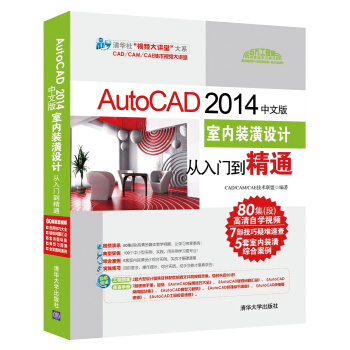
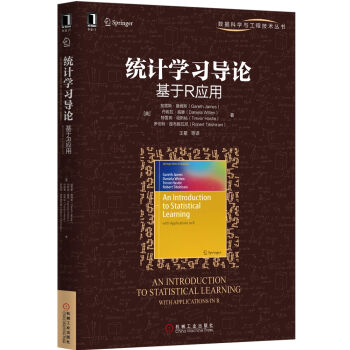
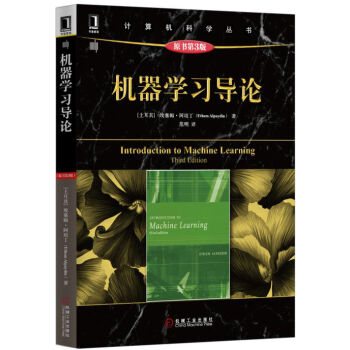


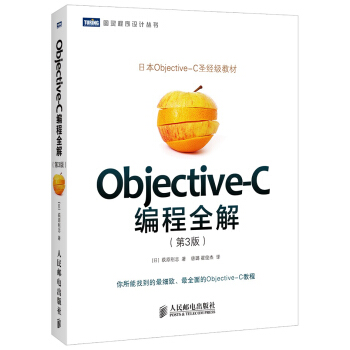
![Autodesk Revit Architecture 2015官方標準教程 [Autodesk Revit Architecture 2015] pdf epub mobi 電子書 下載](https://pic.tinynews.org/11652604/54dc7cafNdafca4f8.jpg)


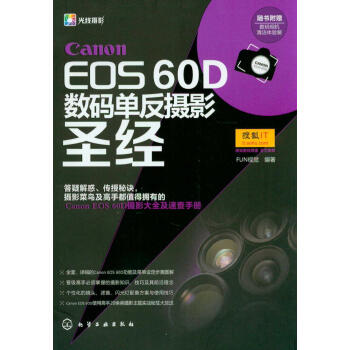


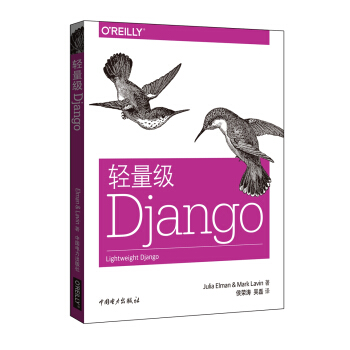
![經典原版書庫:計算機網絡(英文版·第5版) [Computer Networks, Fifth Edition] pdf epub mobi 電子書 下載](https://pic.tinynews.org/10854761/8d81a8b8-308f-4ac3-83ed-f40ba01706f8.jpg)
